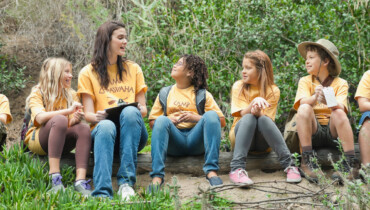As parents, there are many things we do to make sure our children are prepared for school. We check their homework assignment books, make sure they have 257 pencils, make their lunches, have conversations about being kind and inclusive of everyone, etc. It is our job as parents to help them be prepared for what’s to come. And we all are trying our best.
Enter Sandy Hook.
A school shooter situation in an elementary school. Not a high school. Not a college. An elementary school. Parents all over the world had the task of explaining this tragic event to their children while assuring them that their school was perfectly safe. But can we really do that? Promise them they will never face anything like this? Unfortunately, we cannot. That is why we must do everything we can to prepare them for something that is now, dare I say, common.
School Programs
Schools should have an Emergency Preparedness Plan, or an Emergency Operating Procedure, in place that includes a crisis manual for situations that involve an intruder and/or active shooter. They most likely are working with local law enforcement and the police department has the school's specific evacuation plan, rendezvous points, and methods for parent contact at the ready. These programs are obviously most effective if EVERYONE is trained. Teachers, staff, students, and parents all need to know the particulars of the plan, and have practiced it. These policies should be made available to you to review at any time.
The ALICE Training Program is one of the most popular school-based programs in the United States. ALICE stands for:
- Alert - Notify as many people as possible about the threat.
- Lockdown - If evacuation is not possible, the classroom door is to be locked and barricaded, lights turned off, door windows covered and everyone should spread out and stay out of sight.
- Inform - During an active situation, try to communicate the intruder’s movement in realtime. The more updated information law enforcement has, the better.
- Counter - If necessary, as a last resort, try to distract and confuse the intruder. This can be done by throwing things or screaming.
- Evacuate - Escape the building and go towards your rendezvous point.
Schools using ALICE will have a certain number of certified (i.e., trained) teachers and staff who will then help facilitate school drills and train other staff and students. The whole school should then participate in ALICE drills, just as they would a fire drill. Making them second nature to a child is important.
More information on ALICE can be found here.
General Community Programs
Your children should be aware that situations can occur anywhere. In a church, movie theater, mall, concert or at a sporting event. They should be taught to always be aware of their surroundings and be conscious of where their exits are.
Both adults and children need to take an active role in their safety if they are in a situation where there is an intruder and/or an active shooter. The FBI and the US Department of Homeland Security suggest the "Run. Hide. Fight." theory to focus on one thing - survival.
- Run - You are to immediately run, leaving your things, to get to safety. Every second counts.
- Hide - If you are unable to run, then hide. Try to get yourself behind a door you can lock. Silence your electronics. Turn off the lights. Try to spread out (as opposed to hiding in a group) making it harder for the shooter.
- Fight - You may find yourself in a situation where you have no choice but to fight. Try to ambush the shooter and use whatever you can to attack them.
General Recommendations
- Most importantly, children need to know that if faced with an intruder or active shooter situation, they have to be an active participant in their own safety.
- Talk about what they should and shouldn't do if they find themselves in a situation with an intruder or active shooter. If they are old enough, click here to show them a Run.Hide.Fight video.
- Research your school’s policies on emergency preparedness and make sure that an intruder plan is in place. Review that plan with your kids as if it is a homework assignment.
- If your school does not have a policy in place, bring it up to the Principal or your local school board member. Take action. Get a parent group together if necessary.
- Teach your children how to call 911 from a cell phone, a locked cell phone, and a landline.
- Teach your children to always look for the exits when you are out (at a movie, sporting event, etc.) so they have an exit plan if there is an emergency. They will get used to doing this and it will become second nature. This may seem dramatic, but it could save their life.
Taking an active role in making sure your child is prepared, as well as their school, is something that you have to take responsibility for. As a society, we have seen the absolute worst-case scenarios play out right in our homes on our TVs. Reading this article is a start, but it is not enough. Preparation is the key.





